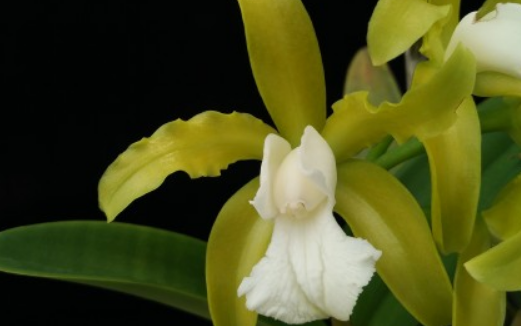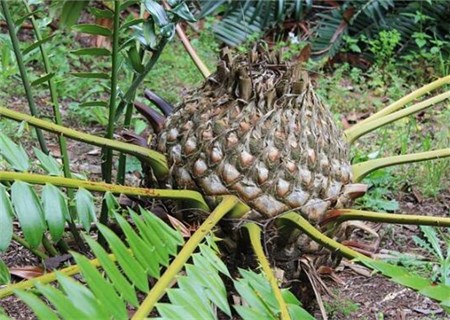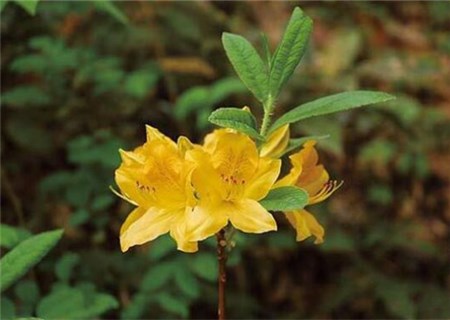Is Cartland of Shulan nationality suitable for planting in China? How do the leaves turn yellow? How do you breed?
Cartland is also known as Gardliara, Cadoriaran, Katrilan and Gadoriaran, so is Cartland suitable for growing in China? How do the leaves turn yellow? How do you breed? It is understood that Cartland is a flower from the subtropics and tropics, which is suitable for growing in a warm and humid environment and requires sufficient scattered light. Cartland is resistant to drought, avoid salinity, is afraid of stagnant water, is not resistant to cold, is not suitable for direct sunlight and dry wind.

First, is Cartland suitable for growing in China?
The reasons why Cartland is suitable for growing in China:
Cartland has strong viability and can be planted in many places where we can grow or create a small environment. It is a perennial herb of the genus Cartland.
Cartland likes to be in a warm and humid environment all the year round. In order to protect Cartland's normal overwintering, the temperature needs to be kept at 20-25 ℃ during the day and 15 ℃ at night. In order to make Cartland's growth environment have a large temperature difference between day and night, it is not possible to maintain a constant temperature, let alone higher than the day at night.
The growth of Cartland requires that in a semi-dark and humid environment, 50-60% of the light of Cartland's growth should be blocked and its photosynthesis should be reduced in other seasons except winter.
In a warm and humid environment, its leaves and false bulbs are dark green, full of vitality, full of luster and beautiful flowers. The new roots and buds flourish.
The temperature of about 10 ℃ will delay and shorten the florescence and can not open completely; if the temperature is about 5 ℃, the leaves will appear dark yellow, lifeless, the flower buds can not be tall and strong, the flower sheath will turn brown, and its growth will be seriously hindered.
When the temperature drops to 1-2 ℃, the leaves will become yellow and fall off quickly, causing the buds to die completely. If the temperature is higher than 20 ℃ at night, the flowering period will be too short.
When cultivated in greenhouse, the temperature difference between day and night should be large, and the temperature in daytime should be 5-10 ℃ higher than that at night. In its growing season, it requires higher moisture and higher air humidity. Do not dry and lack of water, otherwise it will affect the growth and survival of Cartland; in winter, Cartland will almost stop growing, in the relative dormant season, it is a good time to sprout, at this time should keep the air humidity good, room temperature suitable, do not make it dry.
Second, how do the leaves turn yellow?
Water yellow
Due to too much watering, the soil is wet for a long time, the air permeability is relatively poor, and even part of the fibrous roots become rotten. It shows that many young leaves are dark yellow without luster, and the new shoots are shrunk.
Fat yellow
It usually refers to excessive fertilization, showing that the tip of the old leaf turns yellow and falls off. Although the new leaf is relatively thick and shiny, it is generally shown as concave and convex. If it is a valuable flower, you can sprinkle a layer of cabbage or radish seeds and pull it out a few days after emergence in order to consume nutrients.
Dry yellow
Due to the lack of water or dehydration for a long time, although the color of the new leaves is relatively normal, the lower leaves gradually dry yellow and fall off upward and become aging.
Alkali yellow
This mainly occurs in some acidic soils in the south, while the alkaline water quality in the north shows that the leaves gradually fade, turn yellow, or even fall off. The easiest way is to pour fermented rice washing water or Rain Water.
Third, how to reproduce?
1. Ramet propagation of Cartland
The ramet method is relatively simple to operate and can be used by ordinary families. It is suitable to choose the rainy season in spring and autumn to carry out ramet work. Use a sharp cutting tool to cut the root between the two "orchid heads", carefully cut the rhizome at the base, and disinfect the incision. Each clump requires at least 2 pseudobulbs with new buds.
2. Aseptic sowing and tissue culture of Cartland
In the early stage, liquid culture is mainly used to promote the rapid germination of seeds, and then the protocorm can be directly inoculated on the culture medium to achieve one-step seedling formation, the specific steps are as follows:
Materials
The healthy Cartland mother plant was selected for self-pollination and hybridization during flowering, and the fruit could be basically matured about 120-150 days after pollination.
Aseptic sowing
Select the ripe fruit, soak the fruit with 75% alcohol for half a minute, then disinfect the fruit, put the fruit in 0.1% mercury solution, soak for 20 minutes, rinse the fruit with sterile water for 4 or 5 times, then cut the fruit, inoculate the white powdery seeds in the seed germination liquid medium, and shake the culture in 150rpm shaker. A week later, the embryo germinated and a green protocorm with a diameter of 1-2mm was formed in 20 days.
Seedling culture
When the protocorms were inoculated on the seedling culture medium with a straw, the complete plantlets could be formed in one month, and the seedlings could grow into strong seedlings after further culture for 45 days.
Transplanting of test tube plantlets
When the test-tube plantlets can grow to 3pm and 4cm high, they were transferred to natural light for 1-2 weeks to observe the formation of better cuticular layer. After taking it out of the glass bottle, wash the root culture medium and move it into the cornerstone of the mixing pond and carbonized bark matrix to maintain proper humidity and ventilation.
Time: 2019-03-16 Click:
- Prev

What if the leaves of cycad, a beautiful ornamental tree, turn yellow? What varieties do you have? What are the value functions?
Cycad is a beautiful ornamental tree species, cultivation is very common, cycad is a light-loving plant, improper maintenance can easily lead to cycad leaves yellowing. So do you know what to do if the cycad leaves turn yellow? What varieties do you have? What are the value functions? What if the cycad leaves turn yellow? 1. Lack of light during the period when cycads grow new leaves.
- Next

What are the planting techniques of noisy sheep flower (also known as rhododendron)? What is the effect and effect? How much half a kilo?
Sheep flowers, also known as rhododendron, many seeds, small, flowering period from April to May, fruiting period from June to July, flowers or inflorescences used in medicine, commonly seen in hillsides, stone crevices, thickets. So do you know what are the planting techniques of noisy sheep flower? What is the effect and effect? How much is it per jin? In the flower market, we learned that
Related
- Fuxing push coffee new agricultural production and marketing class: lack of small-scale processing plants
- Jujube rice field leisure farm deep ploughing Yilan for five years to create a space for organic food and play
- Nongyu Farm-A trial of organic papaya for brave women with advanced technology
- Four points for attention in the prevention and control of diseases and insect pests of edible fungi
- How to add nutrient solution to Edible Fungi
- Is there any good way to control edible fungus mites?
- Open Inoculation Technology of Edible Fungi
- Is there any clever way to use fertilizer for edible fungus in winter?
- What agents are used to kill the pathogens of edible fungi in the mushroom shed?
- Rapid drying of Edible Fungi

